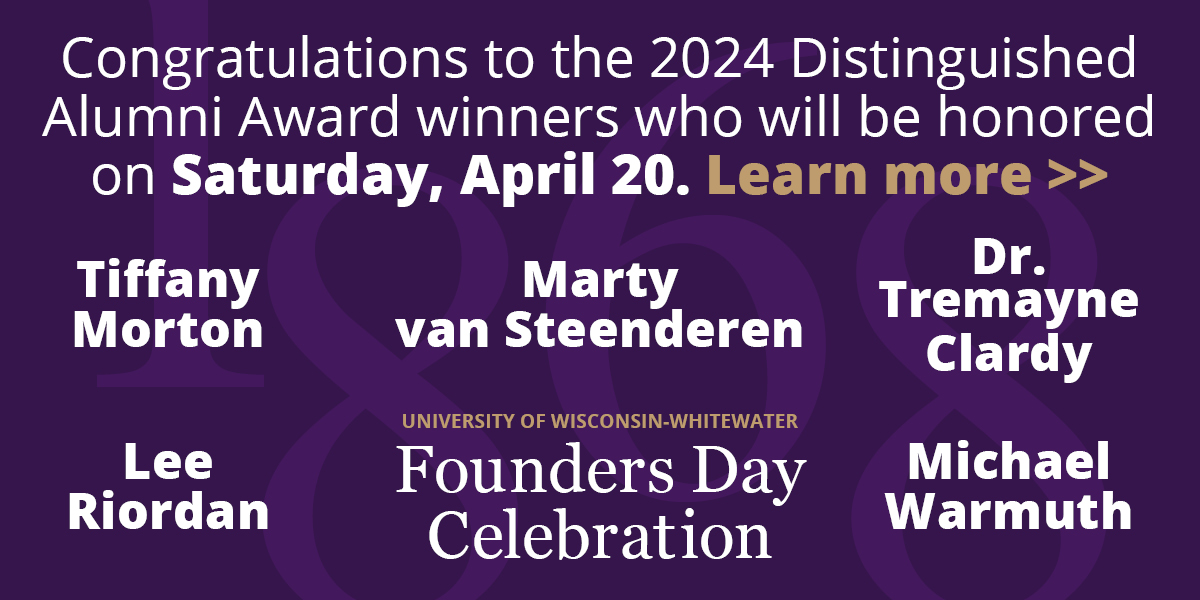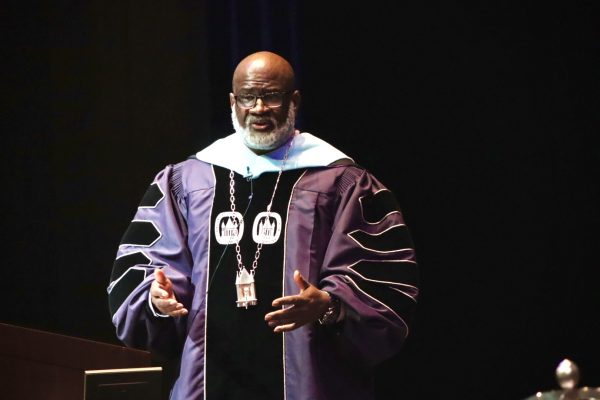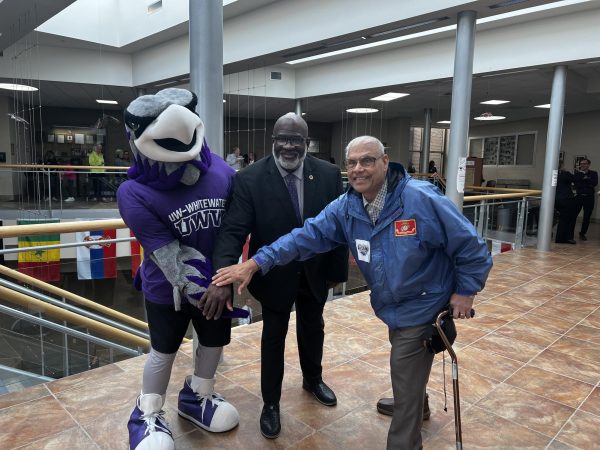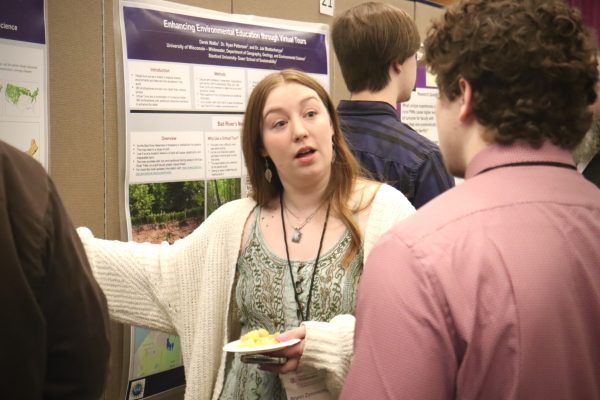New commencement structure sticks
October 3, 2017
While the structure of next semester’s spring commencement hangs in the balance of how many students participate, the dual-commencement system implemented last spring is expected to be used again.
The registrar’s office, which plans the commencement ceremonies at the conclusion of the winter and spring semesters, doesn’t anticipate seeing a substantial change in the number of people graduating, however.
“It doesn’t change much,” Matt Aschenbrener, assistant vice chancellor for enrollment and retention, said. “We’re expecting about the same.”
The new structure of the spring commencement ceremonies, which rearranged when students participated by colleges rather than the level of their degrees, was “really efficient,” Lydia Lobrano, graduation examiner, said.
“I think it went better than we even hoped for,” Lobrano said. “We were at a three-and-a-half-hour ceremony, but we ended up just short of two hours.”
During the morning commencement, comprised of the largest and the smallest colleges, the College of Business and Economics and the College of Arts and Communication, respectively, 792 graduates chose to take part in the morning ceremony on May 13. The number slightly dipped for the afternoon ceremony, as 761 graduates from the colleges of Letters and Sciences and Education and Professional Studies took part in commencement.
Master’s and associate’s degree earners took part in the same ceremonies as their bachelor’s degree-earning peers, instead of splitting out into a separate spring commencement, as the master’s degree graduations had done prior to spring 2017.
Jodi Hare-Paynter, then-coordinator of commencement ceremonies, said in February 2017 that spring commencement was restructured because of an increase in participation, driven partially by a rise in student enrollment.
The restructuring allowed each student to bring two additional people to the ceremony, where in prior years, graduates could only bring five.
“We realize that this is a very important date in student’s lives,” Hare-Paynter said earlier this year. “We want to let them have as many people there as possible … it’s very hard to choose five people that can have the tickets. Allowing at least two more I think would make graduating students happy.”
The restructuring worked well, Aschenbrener said.
“I think that was one of the big benefits for the students,” Aschenbrener said. “Although they may not get to see some of their friends who are graduating in the other ceremony, they could invite more family members who were there all along their [college] journey to participate in their graduation.”
Much, if not all, of the feedback given to the registrar’s office following the commencements was either said in person on the day of, Lobrano said.
“Overall, I don’t think we had many negatives,” Lobrano said. “Having that long of a ceremony is tough on everyone, for families and students. So, I think having split ceremonies and having the shorter amount of time, you get to be more personal with the students crossing the stage.”
Aschenbrener said the graduation planning committee were really the only ones who noticed minor details that could have been changed, like having water more readily available or the location of where flowers were being sold.
“When you throw a party twice a year, you notice the details,” he said.
A new degree
A change will occur this year within the commencement for the colleges of Business and Economics and Arts and Communication, as the doctoral business administration degree candidates will begin to graduate at the end of the current semester in December.
The registrar’s office expects eight doctoral candidates to finish their dissertations in time for the fall commencement, Lobrano said.
“Whether they walk is a different story,” she said.
With doctoral candidates, the process at commencement is different, as their hoods are placed around their necks by their faculty adviser, which denote their academic institution and subject of the degree they earned.






















